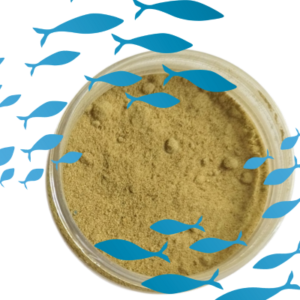Floating fish feed pellets of 3mm size are a common feed option for various species of fish, especially small to medium-sized fish like tilapia, carp, catfish, and trout. Here’s a detailed breakdown of what goes into these pellets:
- Ingredients:
- Protein Source: Typically, fish feed contains a high percentage of protein derived from sources like fish meal, soybean meal, or other plant-based protein sources. The protein content is crucial for the growth and development of fish.
- Carbohydrates: Carbohydrates are an energy source in fish feed. They can come from sources like wheat, corn, or rice bran.
- Lipids (Fats): Fats are essential for providing energy and are also carriers for fat-soluble vitamins. Fish feed may contain fats from fish oil, vegetable oil, or animal fat.
- Vitamins and Minerals: Essential vitamins and minerals are included in fish feed to support fish health and immune function. These include vitamins A, D, E, and various B vitamins, as well as minerals like calcium, phosphorus, and potassium.
- Binders: Binders are added to help the pellets maintain their shape and integrity in water. Common binders include starches or gums.
- Additives: Some additives may be included for specific purposes, such as colorants or flavor enhancers. Additionally, probiotics or enzymes may be added to aid in digestion and nutrient absorption.
- Processing:
- The ingredients are ground into a fine meal.
- The meal is mixed thoroughly to ensure a uniform distribution of nutrients.
- The mixture is then conditioned with steam and water to achieve the desired moisture content for pellet formation.
- The conditioned mixture is extruded through a pellet mill, where it is shaped into pellets of the desired size (in this case, 3mm).
- The pellets are then dried to reduce their moisture content and increase shelf stability.
- Finally, the pellets may be coated with oils or other nutrients to improve palatability and nutritional value.
- Nutritional Considerations:
- Protein content is crucial for fish growth and muscle development. Generally, fish feed for omnivorous and carnivorous fish contains higher protein levels compared to herbivorous fish.
- The lipid content provides energy and is important for maintaining cell structure and function.
- The carbohydrate content varies depending on the species of fish and their dietary requirements. Carnivorous fish require fewer carbohydrates compared to omnivorous or herbivorous species.
- The inclusion of vitamins and minerals ensures that the fish receive essential nutrients for overall health and wellbeing.
- Feeding Recommendations:
- The feeding rate and frequency depend on factors such as the species of fish, water temperature, and growth stage.
- Typically, floating pellets are designed to remain on the water’s surface, making them easily accessible for fish to consume.
- Overfeeding should be avoided, as it can lead to water quality issues and health problems for the fish.





Reviews
There are no reviews yet.